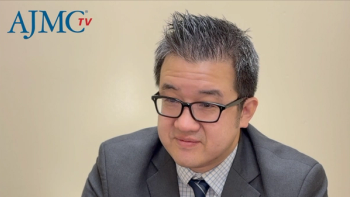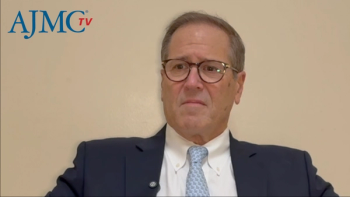
Insulin Use Disparities Pose Long-Term Health Risks, Increase Health System Costs: Elise S. Tremblay, MD, MPH
In this clip, Elise S. Tremblay, MD, MPH, explores factors behind fluctuations in insulin out-of-pocket costs and highlights the serious health consequences of persistently lower insulin use.
Elise S. Tremblay, MD, MPH, continues her conversation with The American Journal of Managed Care®, expanding on findings from her
She highlights factors that may have contributed to the fluctuations in insulin out-of-pocket costs throughout the study period. Tremblay also explores the potential health consequences of persistently lower insulin use among lower-income patients and those with high-deductible health plans with savings options.
Watch
This transcript has been lightly edited; captions were auto-generated
Transcript
What factors do you believe contributed to the peak in insulin out-of-pocket costs between 2014 and 2017 and the subsequent decline by 2021?
I think one of the things that has affected insulin costs in general over the past few decades has been the change in different insulin types and availability. Many years ago, we used less sophisticated insulin analogs that eventually became generic and were relatively inexpensive for patients. Over the last 10 to 20 years or so, there's been a rise in different subtypes of insulin analogs that are, because they're newer, patented cost more money.
I believe that some of the rise in insulin out-of-pocket costs that we saw is just reflective of a switch towards the use of more expensive insulins, generally, in terms of what providers are prescribing and a lack of generic formulations of those newer insulins. I think there's also been a rise in drug prices in general over the study period that we saw.
I think another explanation for the change in insulin costs in recent years is different attempts to minimize the costs by both health insurance providers and legislative efforts. On the health insurance providers' side of things, there has been the institution of something called preventative drug lists, where certain medications that are considered to be life-sustaining or essential might be covered at a higher rate by employers under particular plans. Additionally, there have been efforts with legislation in Congress to put a cap on the cost of insulin per month for individuals for whom it is a life-sustaining medication.
Your results show persistent lower insulin use among lower-income patients and those with high-deductible health plans with savings options. What are the potential health implications of these disparities?
I think this question really gets to the root of the importance of this study. As we talked about earlier, insulin for an individual who has type 1 diabetes, or somebody who has type 2 diabetes and has progressed to the point where they require insulin, is a life-sustaining medication. Without insulin, individuals with diabetes' blood sugar rises to an unhealthy level, which affects all the vital organs of the body, the heart and the kidneys in particular.
Individuals who have diabetes requiring insulin who don't have consistent access to insulin will sustain more health complications. Those will range from short-term complications, things like admissions to the hospital for hyperglycemic emergencies, such as diabetic ketoacidosis or hyperglycemic hyperosmolar state, and these are complications that require emergency department visits, often intensive care, and often prolonged hospitalizations for recovery, particularly for [older] adults who suffer from diabetes.
But in addition to just the short-term complications and the increased cost to the system of those, there are also long-term complications from these chronic levels of high blood sugar that result from underuse of insulin. Those are things like heart disease, kidney disease, and the list goes on and on.
By not allowing individuals access to the medications that they need to control their disease, we guarantee that they will have short- and long-term complications that will worsen their morbidity and mortality over time, as well as add extra cost to the health care system.
Newsletter
Stay ahead of policy, cost, and value—subscribe to AJMC for expert insights at the intersection of clinical care and health economics.







































